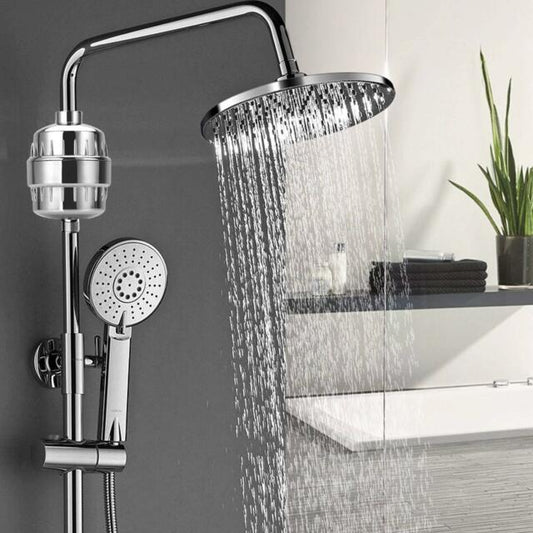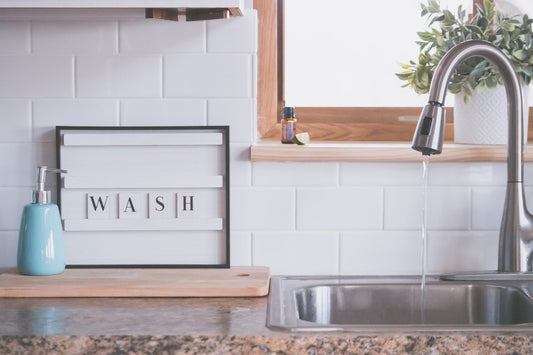Culligan water softeners are some of the most popular systems on the market today. From humble beginnings as a family venture in 1936 in Northbrook Illinois, Culligan now has over five thousand employees and offices in 85 countries all around the world.
However, popularity is no guarantee of competence. Also, even if you’re 100% sold on a Culligan water softener, how much will you end up spending? Unfortunately, an exact figure isn’t very clear if you’re looking at their main site. We’ll go over exactly why that is later on in this article.
All in all, though, if you’re interested in buying a Culligan water softener, we’ll go over the pros and cons -- including what current and former customers are saying about them. We will also cover costs, price, installation, and comparisons as well.
Read More>> Water softener price and cost guide
Culligan Water Softener Review: How Do Culligan Systems Work?
Culligan offers a long line of products, including the following:
-
High-Efficiency Series
-
High-Efficiency 1.25 Series
-
Medallist Series
-
High-Efficiency Municipal Water Conditioner
-
Gold Series
-
High-Efficiency Twin and Progressive Series (Dual Tank Water Softeners)
-
High-Efficiency Softener-Cleer
Most of them function as ion exchange, or salt-based, water softeners. That means they’ll require regular salt replacements, and they’ll come along with the regular problems associated with salt-based water softening.
Since this will be a condensed article that focuses on the performance of Culligan systems overall, we’re not going to go in-depth on every single model that Culligan sells. Instead, since the high-efficiency series makes up the bulk of their products (and would likely be the model that you’re looking to buy if you live in a medium-sized residence and use an average amount of water), we’ll look at the exact specs of those systems.
The Culligan High-Efficiency Series
What are the benefits to owning a Culligan water softener? What makes Culligan different from all the other water softeners out there?
Their main value proposition lies in the “High-Efficiency” series of products. According to their site, water softeners result in a…
-
24% in energy savings by using softened cool water to wash clothes.
-
50% in reduced detergent costs* when washing laundry, hair and body in soft water.
-
30% more out of your water-using appliances* when water contaminants are filtered out.
This is all true of water softeners more generally, but the Culligan High-Efficiency 1-Inch Water Softener boasts 46% higher efficiency over similar models.
Furthermore, the high-efficiency models have a nifty “Dial-A-Softness Valve” that allows you to control the degree to which your water is softened. If you find that you’re still having hard water problems after installation, you can turn the dial up and get rid of the remaining hard water. If you’d like to limit some of your sodium consumption, you can turn the dial down and keep some healthy minerals in the water.
Furthermore, the system provides diagnostics on water use so that you can adjust how much water you’re using over time.
All in all, Culligan offers some very interesting features that aren’t present for a lot of similar models. However, if you’re looking to purchase the High-Efficiency 1-Inch Water Softener, for instance, you might find one glaring issue with their webpage: there’s no listed price.
More>> Water softener price, cost and install guide
Culligan Water Softener Review: Price and Cost The Biggest Drawback
We here at FilterSmart have written plenty of articles about the average price of a water softener, including installation. At worst, the higher-end models shouldn’t run you more than three thousand dollars or so.
However, depending on how many faucets there are in your home, the “Culligan Man” might determine that you need one of their higher-end models, which can run up to $4000 or more (including installation).
For example, one verified reviewer on Consumer Affairs ran up an $8k price tag for a reverse osmosis system that ended up flooding his house. The Culligan tech said it “got stuck in a cycle,” and he even ended up having to pay the tech for repairs.
Reading through the reviews on Consumer Affairs, this seems to be the rule rather than the exception. There are plenty of reports of service calls costing $300 or more, which (of course) will quickly add up.
In short, if Culligan wanted to be upfront about their prices, they would be listed on their official website.
Culligan Water Softener Review: Pros and Cons
Pros
- Ion exchange is a proven way of removing hardness ions from water that’s laced with magnesium and calcium.
- Dial-A-Softness Valve” allows you to adjust the hardness level of your water by releasing more or less sodium.
- Diagnostics allow you to see how much water you’re using -- encouraging you to be more environmentally friendly.
Cons
- Increased sodium consumption (unless you use a potassium substitute, in which case your monthly maintenance costs will triple).
- Dozens of gallons of water are wasted during the regeneration process for ion-exchange softeners, which means that even if you’re being extra cognizant of how much water you’re using, you’ll still likely end up using more than you would if you picked a different type of softener.
- There’s no listed price on the Culligan website. Instead, they encourage you to contact a Culligan salesman so that he can evaluate what model you’ll need.
- Since Culligan water softeners aren’t easy to install, you’ll need to pay for a professional installation by a specialist.
- Service calls will cost you around $300 or more each time, which means the already-high costs of Culligan’s water softeners are made even worse by the fact that you’ll have to pay extra for maintenance.
Read More>> Should I buy or rent a water softener?
Culligan Water Softener Review Conclusion
While Culligan Water Softeners -- like the high-efficiency models -- are technically less energy-intensive than other salt-based softeners, the fact remains that they still use a considerable amount of electricity and water in comparison to salt-free water softeners (or conditioners) like the FilterSmart line.
On average, ion exchange softeners waste thousands of gallons of water a year, and the regeneration process can unnecessarily run up your electricity bill. Increased wastewater? Increased energy usage? Neither of these are good for the environment. Not to mention the extra 300mg of sodium that you’ll be consuming every day (and the salt you’ll have to buy and waste).
On the flipside, new technologies like template-assisted crystallization don’t require electricity or a discharge line, while still getting rid of all the problems you’ll encounter with hard water.
As far as salt-based water softeners go, Culligan is one of the oldest and most reputable brands out there. However, they’ll still end up charging considerably more than most water softening companies (particularly if you ever run into any issues with maintenance).
Questions? Concerns? Feel free to get in touch:
Call us: 866.455.9989
Email us: sales@filtersmart.com







